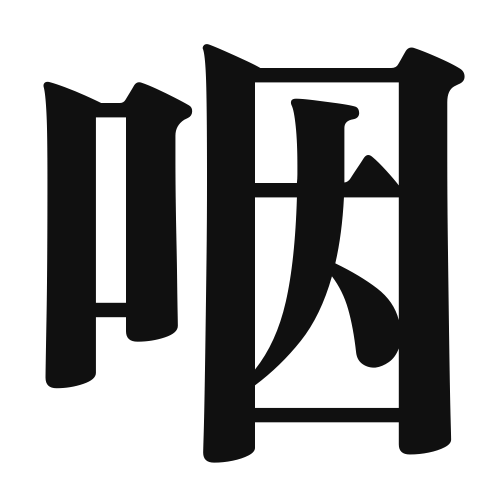1. Overview of Meaning
The kanji “咽” (in) refers to the throat, specifically the part of the body that connects the mouth and the esophagus. It is often associated with functions such as swallowing and speaking.
2. Formation and Radical
Formation of the Kanji: The kanji “咽” is a phono-semantic compound (形声文字), which means it combines a phonetic component with a semantic component. The left part “口” (kuchi) represents the mouth, while the right part “飲” (in) relates to drinking, indicating its connection to the throat’s function in consuming food and drink.
Radical: The radical for “咽” is “口” (kuchi), which is commonly associated with words related to the mouth and speaking.
3. Examples of Usage
Common Words and Phrases:
- 咽頭 (いんとう, intou) – pharynx
- 咽喉 (いんこう, inkou) – throat
Example Sentences in Daily Conversation:
- 風邪をひいて咽が痛いです。 (かぜをひいていんがいたいです。) – I caught a cold and my throat hurts.
- 彼は大声で叫んで咽が乾いた。 (かれはおおごえでさけんでいんがかわいた。) – He shouted loudly and his throat became dry.
4. Synonyms and Antonyms
Similar Kanji:
- 喉 (のど, nodo) – This also means throat but is more commonly used in everyday language.
Antonyms:
- 無口 (むくち, mukuchi) – meaning taciturn or silent, which contrasts with the idea of speaking associated with the throat.
5. Cultural and Historical Background
Relation to Japanese Culture: The throat plays a significant role in Japanese culture, especially in traditional arts like singing and storytelling, where vocal expression is essential.
Proverbs and Idioms:
- 口は災いの元 (くちはわざわいのもと, kuchi wa wazawai no moto) – “The mouth is the source of calamity,” which emphasizes the importance of being careful with words, relating to the function of the throat.
